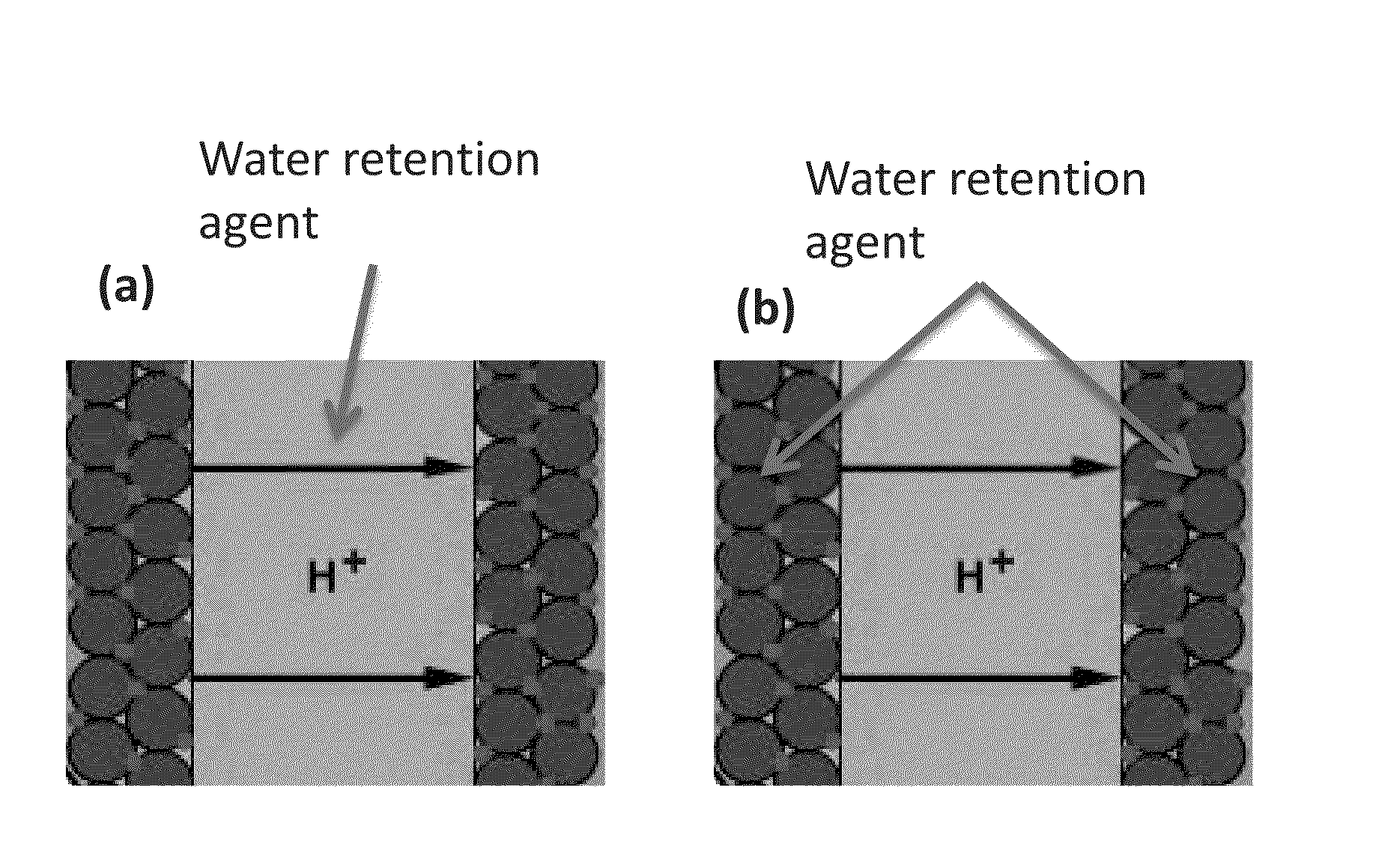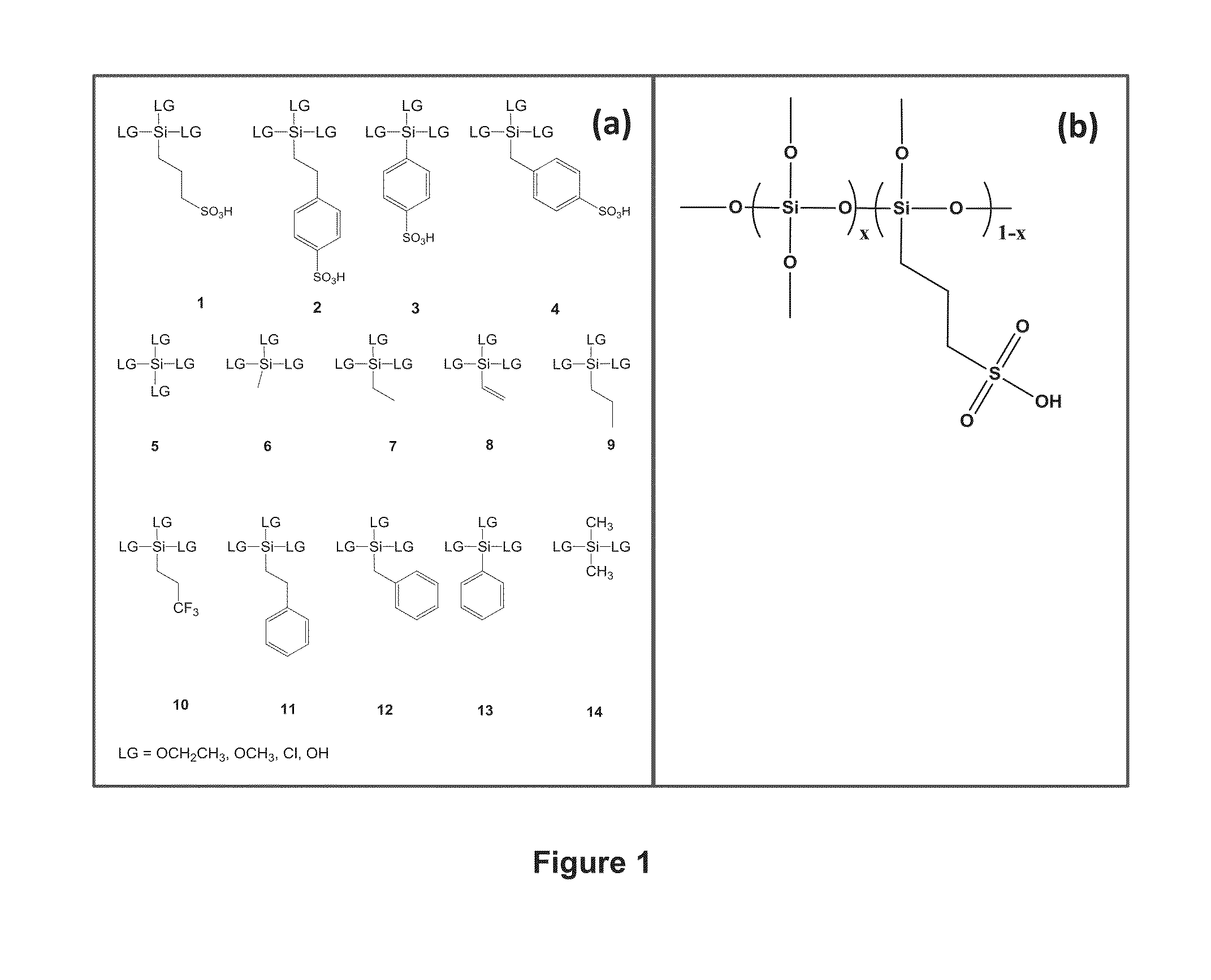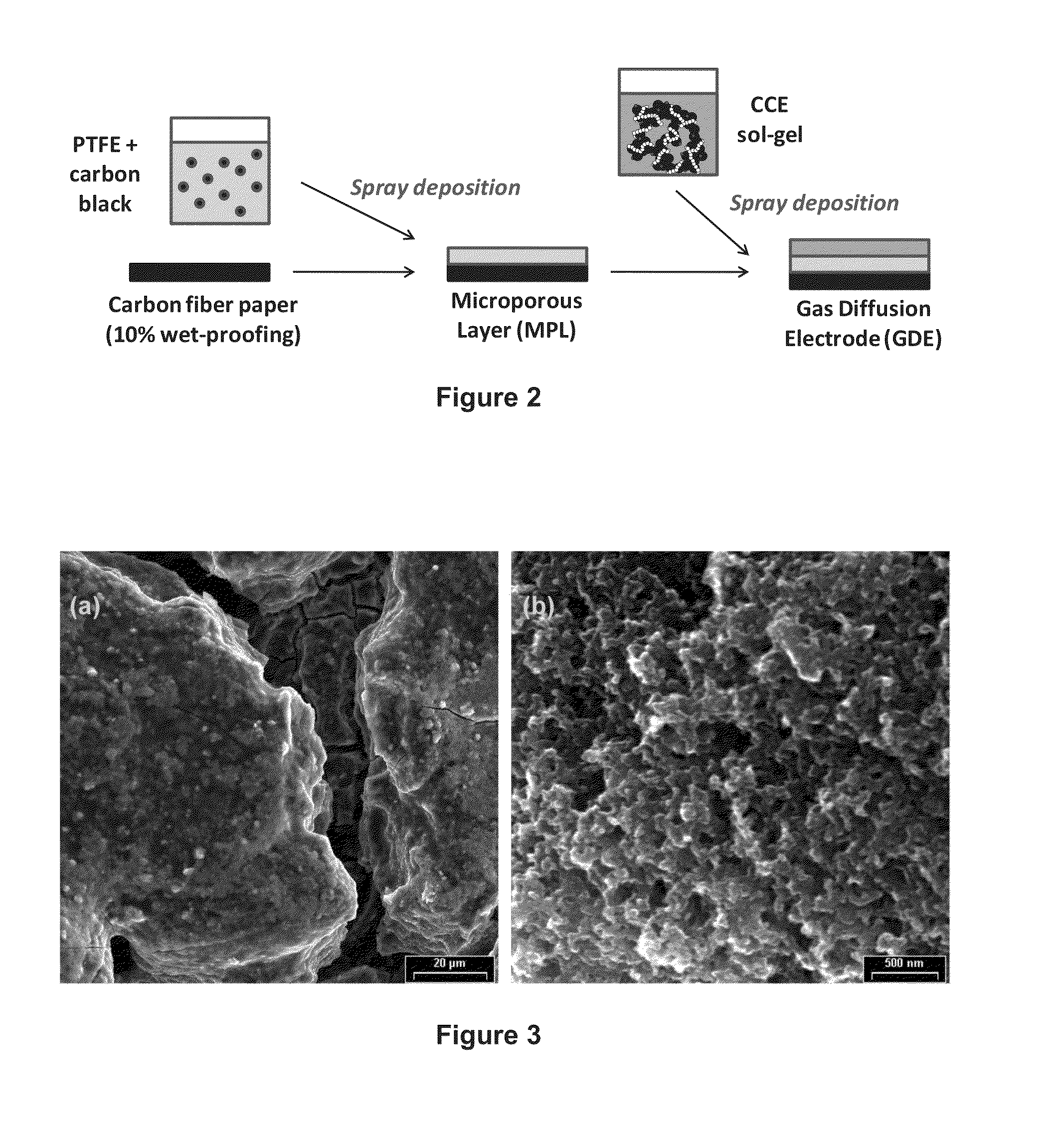Sulfonated silica-based electrode materials useful in fuel cells
- Summary
- Abstract
- Description
- Claims
- Application Information
AI Technical Summary
Benefits of technology
Problems solved by technology
Method used
Image
Examples
Embodiment Construction
[0082]Water is necessary to facilitate good proton conduction in a MEA, and sulfonate groups are known to aid proton conduction. Organosilane precursors with side chains containing sulfonate groups were used in hope of increasing the proton conducting nature of CCEs of the invention. A portion of the chemical structure of an ionomer organosilcate polymer tested is shown in FIG. 1. Here, a CCE fabrication method is described in which the ionomer precursors are added in monomer form to carbon and subsequently polymerized26. The polymerization of the precursors in situ provides an opportunity for the organosilane to chemically bond to e.g., hydroxyl groups on the carbon surface to permit proton transport to the active catalyst surface. One aspect of this work is the growth of the monomers into a polymer network around the carbon-supported catalyst to result in a composite material in which the carbon-supported catalyst is embedded in matrix of an ionomer. The silicate (SiO2) network ma...
PUM
 Login to View More
Login to View More Abstract
Description
Claims
Application Information
 Login to View More
Login to View More - R&D
- Intellectual Property
- Life Sciences
- Materials
- Tech Scout
- Unparalleled Data Quality
- Higher Quality Content
- 60% Fewer Hallucinations
Browse by: Latest US Patents, China's latest patents, Technical Efficacy Thesaurus, Application Domain, Technology Topic, Popular Technical Reports.
© 2025 PatSnap. All rights reserved.Legal|Privacy policy|Modern Slavery Act Transparency Statement|Sitemap|About US| Contact US: help@patsnap.com



